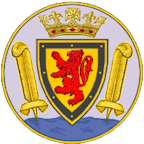History 1850 to 1875
Saltash underwent much modernisation during the 1850s. On the 31st of May 1850 a lease of the ferry was granted to adventurers for twenty-one years at £195 a year (the equivalent of over £26,000 today), and a new floating bridge ferry was provided by the lessees. The whole length of Fore Street was dug up that same year, in order to install concealed drainage. In 1854 an enterprising Saltash citizen, William Gilbert, set up the Saltash Steamboat Company to carry both passengers and freight between Saltash, Plymouth, Stonehouse, and Devonport. In 1857 the lower end of Fore Street was improved to facilitate access to the ferry, and the archway on Fore Street, which represented an increasing impediment to trade as heavily loaded wagons had to be unloaded to enable them to pass through, was demolished in 1859.
Isambard Kingdom Brunel was the genius responsible for the new railway bridge constructed during the 1850s. An engineering marvel of its time, the bridge cost £230,000 to build (the equivalent of over £27,000,000 today), and is 2,240 feet long. The greatest span is 455 feet, and the railway runs 100 feet above high water level. Although the bridge is only the width of a single track, its supporting piers are necessarily massive. Nevertheless, the construction of the bridge, railway track, and station resulted in the loss of just five buildings: three for the span (part of a brewery on Ashtor Rock, a house at the foot of Fore Street and a house in Silver Street) and two for the station (a house in Albert Road and a barn in Culver Road). The Royal Albert Bridge was opened by Prince Albert, after whom it was named, on the 2nd of May 1859.
The new bridge played a major role in the town's development. The station quickly became established as an important railhead for the export of market garden produce, an important local industry. The swathe cut by the new railway opened up areas of land for development, and rows of cottages were built in the immediate vicinity of the line. The improved communications also helped to raise the profile of the town.
The waterside community continued to grow. Many of the people worked within the fishing industry, the men on deep-sea boats and the women harvesting and selling shellfish. The 1856 Post Office Directory recorded: "Great quantities of cockles and mussels are daily carried to Devonport and Plymouth by the women of Saltash, who derive their chief means of support therefrom." Others were employed on shore; the quarry and limekilns were still in operation, the Essa Brewery and Wine and Spirit Company opened in Ellwell Lane just north of Lower Fore Street, a gas works was built in 1862 on land to the south of Town Quay adjacent to a brass and iron foundry (whence it continued to supply the town until 1947), and there were builders and coal merchants operating in the area.
The town's spiritual and educational needs were not neglected. The
Baptist Chapel was rebuilt in 1865, becoming a
commodious Gothic Chapel of considerable architectural pretensions
. A
major restoration of St Nicholas's Chapel took place in 1869, and another
Methodist Chapel, at Burraton, was erected in the same year. Shortly
after, a new Board School was built on North Road, close to its junction
with Fore Street.
The junction of North Road and Fore Street was widened in 1871 by the demolition of the Fountain Inn (formerly the Lord Nelson). Port View was laid out as a gated community of villas set in their own grounds, and attracted wealthy merchants, businessmen, and retired military officers. Similar villas were built overlooking the Hamoaze, on the slopes to the north west of Sand Quay, on Longstone Road (now Callington Road), and elsewhere around the town.
However, amongst all these changes, some old institutions remained largely unaltered. Road transport still centred on the Green Dragon Inn (on the southern side of Fore Street, where the Co-op is now) which acted as the post house, the courtyard at the back of the inn being used to collect the mail and by passengers waiting to join the Callington to London stage coach. The markets on Tuesdays and Saturdays still provided an important service, and the annual fair, by now held from St James’ Day (25th July) until the following Saturday, was still an important event.
page updated 2025-03-21
